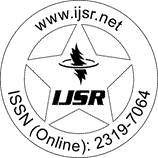Downloads: 7 | Views: 102 | Weekly Hits: ⮙1 | Monthly Hits: ⮙2
Research Paper | Computer Science & Engineering | India | Volume 12 Issue 5, May 2023 | Rating: 5.2 / 10
Analyzing Tsunami Occurrence and Predictive Techniques: Enhancing Early Warning Systems with Machine Learning
Harish Narne
Abstract: Tsunamis are immensely powerful natural hazards capable of devastating coastal areas and are primarily triggered by underwater earthquakes, volcanic eruptions, or landslides. The ability to predict tsunami wave heights accurately is essential for effective early warning systems and disaster risk mitigation strategies. This research introduces a tsunami prediction model based on neural networks, incorporating critical inputs like earthquake magnitude, depth, distance from the coastline, and ocean floor slope. Our model demonstrates a high positive correlation, with an R-value of 0.9214, highlighting its capability to capture complex relationships within seismic and oceanographic data. This study?s findings underscore the model?s potential to improve the precision of tsunami early warning systems, offering a valuable tool for enhancing preparedness and response measures.
Keywords: Tsunami Prediction, Disaster Risk Reduction, Machine Learning, Decision Trees, Support Vector Machines (SVM), Regression Analysis, k-nearest Neighbors (k-NN), Neural Networks, Early Warning Systems
Edition: Volume 12 Issue 5, May 2023,
Pages: 2708 - 2711
